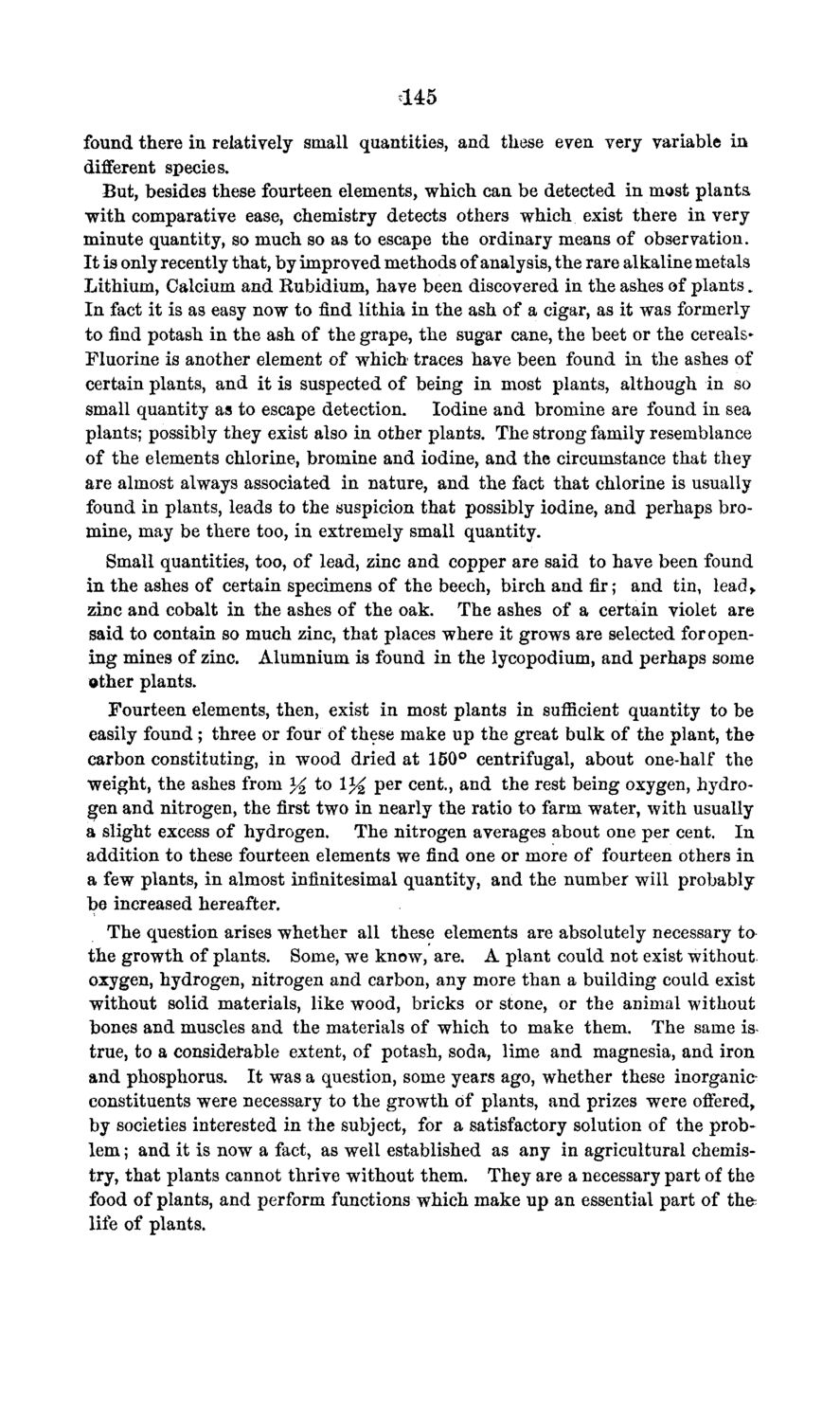| |
| |
Caption: Board of Trustees Minutes - 1869
This is a reduced-resolution page image for fast online browsing.

EXTRACTED TEXT FROM PAGE:
;145 found there in relatively small quantities, and these even very variable in different species. But, besides these fourteen elements, which can be detected in most plants, with comparative ease, chemistry detects others which exist there in very minute quantity, so much so as to escape the ordinary means of observation. It is only recently that, by improved methods of analysis, the rare alkaline metals Lithium, Calcium and Rubidium, have been discovered in the ashes of plants, In fact it is as easy now to find lithia in the ash of a cigar, as it was formerly to find potash in the ash of the grape, the sugar cane, the beet or the cereals* Fluorine is another element of which traces have been found in the ashes of certain plants, and it is suspected of being in most plants, although in so small quantity as to escape detection. Iodine and bromine are found in sea plants; possibly they exist also in other plants. The strong family resemblance of the elements chlorine, bromine and iodine, and the circumstance that they are almost always associated in nature, and the fact that chlorine is usually found in plants, leads to the suspicion that possibly iodine, and perhaps bromine, may be there too, in extremely small quantity. Small quantities, too, of lead, zinc and copper are said to have been found in the ashes of certain specimens of the beech, birch and fir; and tin, lead > zinc and cobalt in the ashes of the oak. The ashes of a certain violet are said to contain so much zinc, that places where it grows are selected for opening mines of zinc. Alumnium is found in the lycopodium, and perhaps some other plants. Fourteen elements, then, exist in most plants in sufficient quantity to be easily found; three or four of these make up the great bulk of the plant, the carbon constituting, in wood dried at 150° centrifugal, about one-half the weight, the ashes from J^ to X% per cent., and the rest being oxygen, hydrogen and nitrogen, the first two in nearly the ratio to farm water, with usually a slight excess of hydrogen. The nitrogen averages about one per cent. In addition to these fourteen elements we find one or more of fourteen others in a few plants, in almost infinitesimal quantity, and the number will probably be increased hereafter. The question arises whether all these elements are absolutely necessary to the growth of plants. Some, we know, are. A plant could not exist without oxygen, hydrogen, nitrogen and carbon, any more than a building could exist without solid materials, like wood, bricks or stone, or the animal without bones and muscles and the materials of which to make them. The same istrue, to a considerable extent, of potash, soda, lime and magnesia, and iron and phosphorus. It was a question, some years ago, whether these inorganicconstituents were necessary to the growth of plants, and prizes were offered, by societies interested in the subject, for a satisfactory solution of the problem ; and it is now a fact, as well established as any in agricultural chemistry, that plants cannot thrive without them. They are a necessary part of the food of plants, and perform functions which make up an essential part of the life of plants.
| |